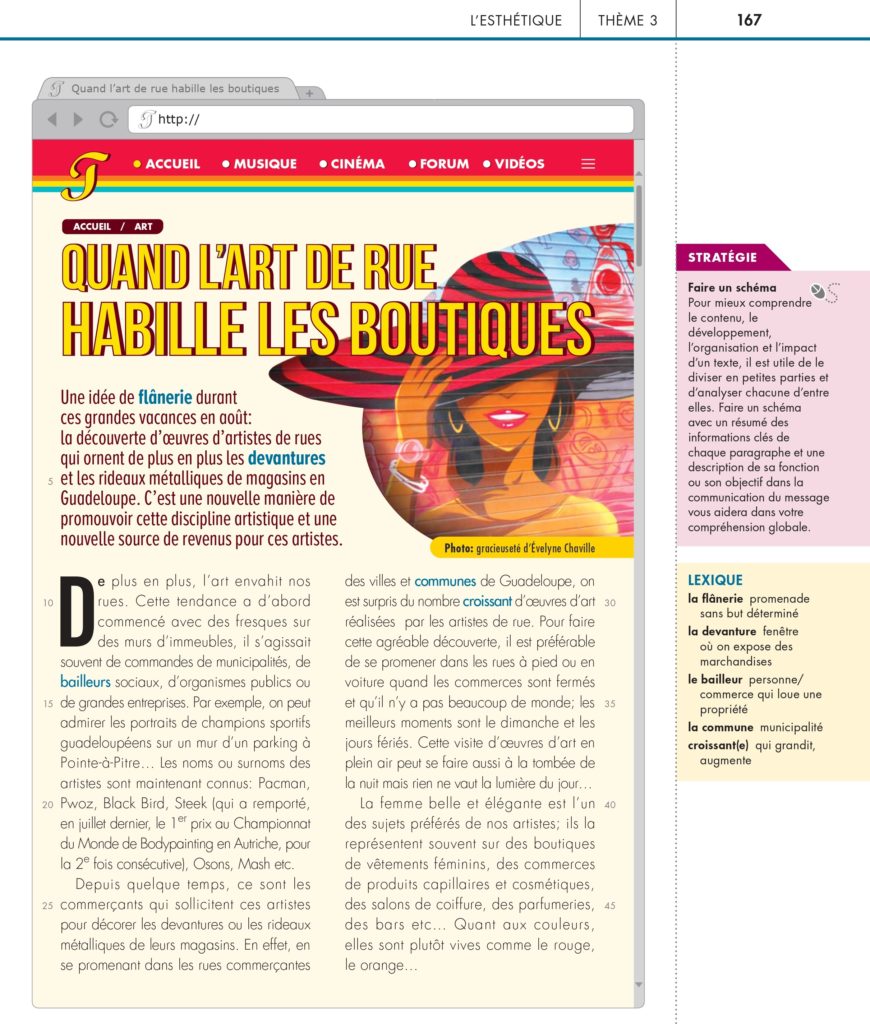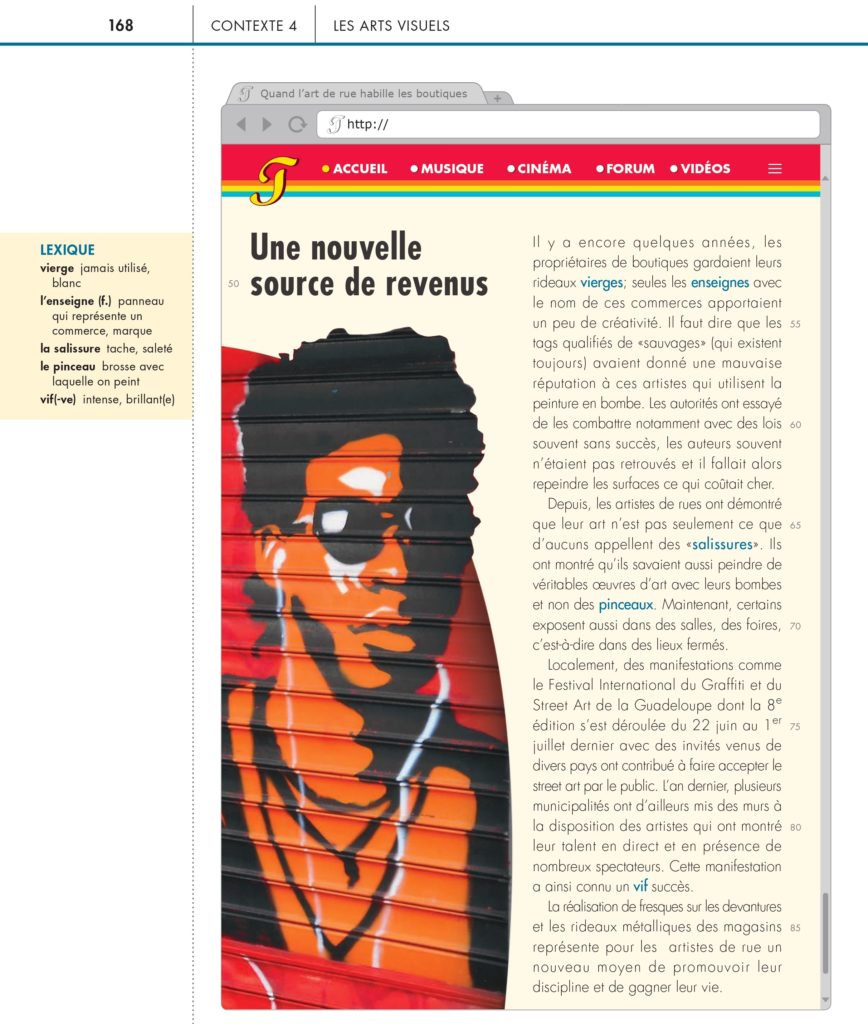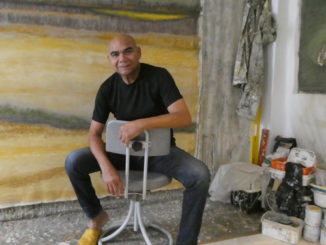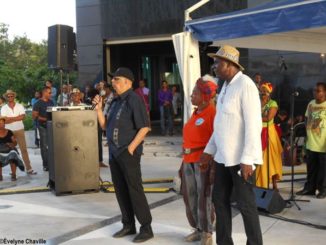
In 2019, we were contacted by the American publishing house Vista Higher Learning, but the Covid-19 pandemic and its terrible consequences somewhat slowed down the writing of the article we are publishing today.

The 25-year-old language learning company, based in Boston (USA), wanted to include a Kariculture article in one of its books. We were therefore delighted to grant permission for this publication because, in our view, it was also a way to showcase the talent of Guadeloupean “street artists”.
This is the article entitled “Quand l’art de rue habille les boutiques” (When street art dresses shops), published in Kariculture on August 2, 2018. It was while walking through the streets of Pointe-à-Pitre on a sunny Sunday morning with a camera that we spotted all the artworks drawn on the lowered roller shutters of stores; on weekdays, the stores were open and many cars were parked, so it was difficult to see them. Instead of archiving these images, we shared them with a text. The writing of this article is therefore pure chance.

As agreed, Vista Higher Learning included the article “Quand l’art de rue habille les boutiques” on pages 167 and 168 (Visual Arts section) of the 2nd edition of its book entitled “Thèmes”.
This 366-page work contains writings in French divided into several chapters, such as: childhood and adolescence, social relationships, customs, alienation and assimilation, nationalism and patriotism, literary arts, visual arts, technology and its effects on society, education and the world of work, leisure and sport, travel, economy, environment, and so on.
The originality of this book is that students learn the French language by being “immersed” in life in mainland France and the French overseas territories, in French-speaking countries such as Canada, Morocco, Congo, Ivory Coast and Senegal…
We wish all students in the United States and elsewhere the very best in learning French.



